The decision about whether or not to fly happens the night before, based largely on weather forecasts for the next day. We are trying to get a good mix of inversion and non-inversion conditions, and both daytime and nighttime flights, but the weather can be challenging, with fog over the lake during inversion conditions and stormy conditions otherwise.

The mischievous met probe under the belly of the plane.
We begin each flight with a three hour “preflight”. During this time, we turn on all the scientific instruments and let them warm up and stabilize. Most have a complicated start-up procedure that can last anywhere from 30 minutes to 3 hours, during which we are on the lookout for any problems that would prevent us from taking good data during the flight. For example, during our first preflight, the meteorological probe (pictured here) that records our location, altitude, and wind speed suddenly stopped working. Without these data, the rest of the measurements are uninterpretable, so for a frantic hour, we made phone calls to everyone who had been involved in the software design. About 5 minutes before we would have had to cancel the day’s flight, someone realized that one of the communication port settings had been set incorrectly. And with that, the flight was back on.
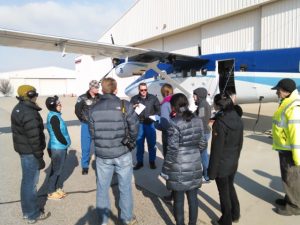
A plane-side meeting before our first research flight on January 16th
About an hour into the preflight, we call the ground crew at the hangar and ask them to tow the plane out onto the tarmac. To do this, the plane must be briefly unhooked from the power, and towed out while the instruments remain on battery power. We’ve made a game of trying do this transition as fast as possible. So far, our best time is 1 minute and 50 seconds.
Fifteen minutes before takeoff, we have a “plane-side” meeting. The pilots go over the flight plan and the science goals, the scientists and pilots get on board, the pilots run down their preflight checklist, and then we take off.

The flight scientist seat, located at the front of the plane just behind the cockpit
Our team includes six grad students and postdocs who do the majority of the flying, but there are only two seats on board. So the flying scientists are arranged into three groups of two, and each person on the team is an expert in one of the four major instruments, and knows the basics of a second. We rotate through the teams, so that each instrument can take a turn with an expert operator on board.
The scientist who sits up front is called the flight scientist. The pilots have a flight plan in place, but based on the real-time measurements we see, the flight scientist can make slight modifications to the flight plan, including changing altitude, deciding to circle around a power plant plume more than once, etc. As long as it can be done safely, and in accordance with air traffic control, the pilots are happy to make these adjustments.
During flight, both scientists are busy monitoring the instruments, but there’s always some time for pictures, especially with views like these.
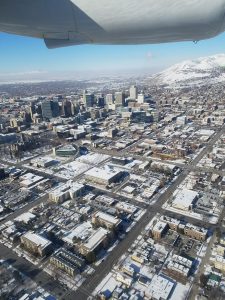
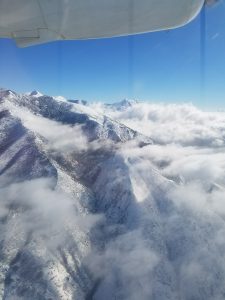
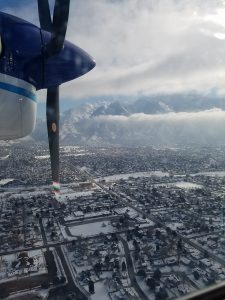

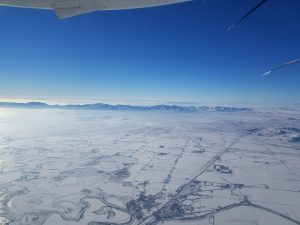
We are limited by the fuel tank capacity, so each flight lasts between two and a half and three hours. We typically do two flights back-to-back, with a quick refuel and switching of scientists in between. After the second flight, we have a quick postflight period, in which the instruments are shut down (this is much faster than turning them on), and then we are done for the day. As of this blog post, we have completed 13 flights, and have approximately 9 left to go. Here’s hoping the weather holds out!
